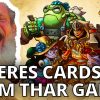Things I Learned about Galaga While Reading Galaga by Michael Kimball
I’m reviewing all of the Boss Fight Books releases, so subscribe to this channel and click the bell notification icon to be sure you don’t miss future reviews.
Welcome to Burning Books. I’m Caleb, and I want to help you love video games even more. Today I’m continuing to review all of the Boss Fight Books releases. Subscribe and click the bell icon so you don’t miss future reviews. As for past reviews, check the description below for a link to my playlist of all the Boss Fight Books reviews so far.
Today’s book: Galaga by Michael Kimball. Did you know there’s a way to cheat in Galaga by allowing enemy shots to stack, occupying the game’s allotted enemy fire memory, ultimately rendering the enemies unable to shoot at all. But as Michael Kimball tells us, real Galaga players are ethically opposed to using the cheat.
This story of Galaga, the book by Michael Kimball, is a personal one, moreso than any other Boss Fight Books release I’ve read and reviewed so far. And it’s not just the books theme that’s personal–that theme being one of the author’s childhood abuse and teenage awkwardness where solace was found in shopping mall arcades playing Galaga–but the very format of the book evokes personality. Rather than the traditional chapter-based overt, linear narrative, Michael Kimball gives us a series of short bursts of prose that hint at narrative.
“You can buy a Galaga money clip. You can buy a wood burn of the Galaga double fighters with a heart between them. You can buy a Galaga dog sweater.” (pg 86)
For example, one section may list a bunch of Galaga-inspired merchandise items–ranging from t-shirts to wedding cakes–with the immediate next section describing the author’s abusive childhood.
One time, my dad grabbed me by my shoulders and shook me until my head went blank, a kind of tilt. It wasn’t until later that night, lying in bed, that by brain rebooted and I understood what had happened. (pg 18)
Think of jump cuts in a movie and how they cause the viewer to quickly re-invest, the brain has to wake up to figure out what just happened. Why were we watching someone talk about a book and now we’re looking at an image of that book. Something changed. Our brain has to figure it out. As oft-media viewers we’re used to jump cuts that are thematically related–talking about book to shot of book–but when the clips being cut between are drastically different–abusive childhood to list of video game facts–we have to work a bit harder to find the narrative.
“You can buy Galaga t-shirts with a variety of sayings on them. For instance, you can buy a Galaga t-shirt with the double fighters on it and “BFF” written under it. There is also a tote bag version and a coffee mug version of this.” (pg 58)
The way Galaga by Michael Kimball juxtaposes benign merchandise with physical abuse reduces the import of the abuse. This projects a flat affect in the author’s personality which heightens the role Galaga played in his life. In other words, while emotional expressiveness may have been beaten out of author when he was a child, Galaga became a way for him to control something, to understand that while his relationship with is father might not make sense, there are things in this world that can make sense. Namely: Galaga.
This intentionally disjointed approach is more work for the reader, but perhaps more satisfying as well. Functionally, short sections also act as relief valves. A reader would get exhausted reading full pages of lists. But seeing the white space on the page between sections taps into the same part of the brain that rationalizes the “just one more episode” thought process that justifies binge-watching a Netflix series.
“I checked with a cidada expert who said the Boss Galagas are definitely not cicadas. She didn’t think they were birds either. Another possibility is that the Boss Galagas are giant flies. An entomologist didn’t rule out that possibility.” (pg 4)
With Galaga, book and author are inextricably linked. (aside: I’d argue that book and author are always inextricably linked–an argument I’ve made in previous videos–but with Galaga, the argument is easier to make). The details Kimball chooses to highlight speak to the mind behind the words. Nothing is properly sourced (indicating that mentioning the detail is more important than the detail itself), Kimball admits often to lying about various Galaga “facts,” and considering the personal stories are treated with the same reverence as the benign lists of Galaga products and song references, the choice to be emotionally subdued is a commentary against emotion. That’s a very intentional choice.
And here’s where my only real criticism comes in. I anticipated the larger theme resolving into something a bit more overt. Multiple lists of Galaga merchandise, multiple mentions of fake Galaga hacks, multiple examples of Galaga in song lyrics should culminate into something, especially considering the book relies so heavily on those emotional content decisions I mentioned earlier. But the book is missing this closure.
I was hoping these disparate lists would speak to something, perhaps a final page diagnosis of OCD or the revelation that Kimball has filled his home with all of these products he mentions throughout. In other words, give the reader a reason why all of these lists are so important. If the simple reason is that the author needs structure and control as a response to his childhood abuse, well, that was apparent on page 17 when immediately following the first mention of abuse we’re given a few lines of ad copy from an early Galaga marketing campaign.
But ultimately, the book’s brevity allows forgiveness. It’s a short enough book to be interesting without necessarily needing overt closure. The book is really interesting and definitely worth a read if you enjoy Galaga or unique methods of storytelling.
Mentioned
Music Credits
- 8bit Dungeon Level Kevin MacLeod (incompetech.com), Licensed under Creative Commons: By Attribution 3.0 License, http://creativecommons.org/licenses/by/3.0/


